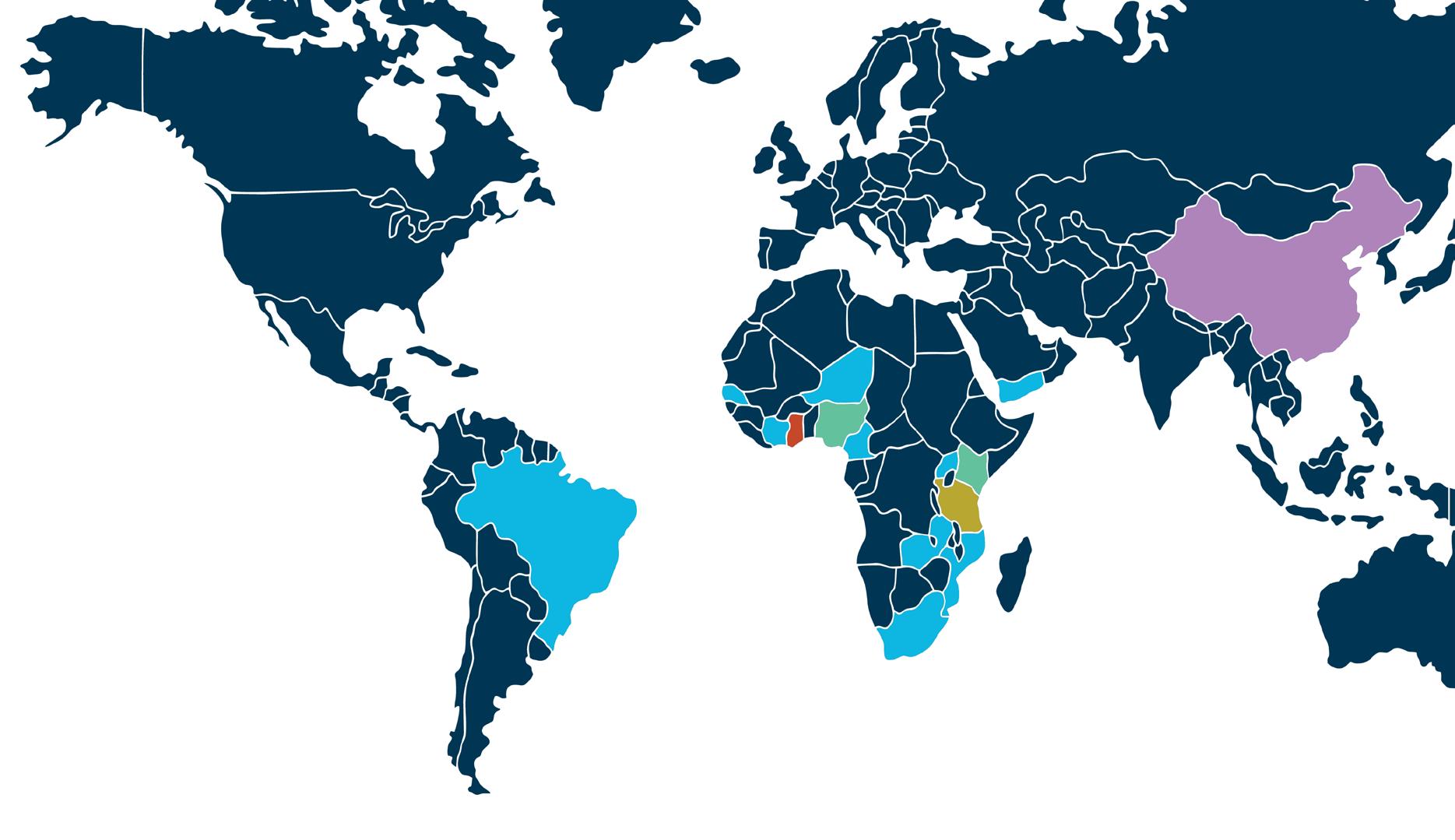
2 minute read
Communities change their behaviours to reduce the risk of infection
Participatory hot-spot mapping in Côte d’Ivoire
Achieving long-term reduction in SCH prevalence remains a challenge. Health programmes’ capacity to achieve this objective is often hampered by conditions such as lack of sanitation and water infrastructure, and risk practices, like open urination or defecation, observed in endemic areas. Persistent reinfection has been observed in Côte d’Ivoire despite the successful implementation and high coverage of treatment activities among SAC in the country since 2012.
We are piloting a participatory community assessment approach to estimate and map out prevalent risk-behaviours in communities endemic for SCH in western Côte d’Ivoire. This approach integrates
Barriers and enablers of treatment uptake across Niger, Malawi and Madagascar
Between 2018 and 2020, we conducted a series of social assessments in Malawi, Niger and Madagascar. Comparable villages were selected in each country, all characterised by being endemic for SCH, reporting irregular treatment coverage during mass treatment activities, high poverty rates, and location next to freshwater sources. Data collection included focus group discussions with adults and children as well as interviews with key informants (e.g., village chiefs and drug distributors).
Asystematic reviewofbehaviour changeinterventions
participatory scoring exercises and GIS mapping activities. The latter will produce geo-referenced information concerning local risk activities. Community planning sessions will be held subsequently. We have developed a protocol for this study which has been reviewed and approved by the MoH. This pilot approach was be tested between September and October 2023.
Mass drug administration (MDA) has been the strategy of choice to control SCH in endemic countries over the last two decades. Despite ongoing efforts, the disease still affects over 200 million people worldwide. Behaviour change (BC) interventions have the potential to strengthen control activities by disrupting the transmission cycle through modifying exposure behaviour (water contact) and other risk practices, or through fostering treatment seeking or acceptance.
In collaboration with the Global Schistosomiasis Alliance, we led the development of a systematic review of behaviour change interventions for SCH control and elimination in low/middle-income countries
Monitoring and evaluating behaviour change
17 villages were visited by local research teams, with supervision by the respective MoH.
The results of these studies have already been completed and shared with country programmes to develop recommendations for communication and awareness raising activities.
Drawing on the data collected previously, we are now developing a multi-country analysis to identify persistent barriers to treatment uptake, potential participation enhancers, and outline recommendations across programmes at different stages.
Monitoring and evaluation (M&E) play a fundamental role in the design and delivery of behaviour change interventions, enabling continuous learning and adaptation and improving the chances of success.
However, M&E of behaviour change is challenging in programme settings. People’s reasons for their daily behaviours may be abstract or hard to measure due to privacy. They can vary by settings and target groups. Behavioural monitoring can also be costly, not least due to the complex nature of behaviour and behaviour change interventions.
(LMIC). This review examines different intervention approaches to assess their effectiveness in modifying risk practices and affecting epidemiological trends. Read the full paper here.
Has the level of risk reduced?
Have behaviours changed as a result of the intervention?
Is there indication that behaviours have changed?
Was the intervention delivered as expected?
Is the intervention being delivered well?
A young boy receives a tablet of mebendozole from a community health worker during a deworming campaign under the supervision of Dr Louisette in the district of Vatomandry, Madagascar.
At the request of our partner


The END Fund, we developed a practical framework to help select appropriate M&E approaches, listing recommended approaches for ongoing monitoring of programme delivery, and for process and outcome evaluation. Deciding which approach should be applied is guided by the purpose of the M&E activity, and by resource and time considerations, as well as by the desired level of quality and reliability of the data gathered.
The framework also proposes a menu of potential indicators to include in a monitoring plan for each of the proposed approaches.
Guiding questions for selection of M&E approach. Each question corresponds with a proposed approach.




